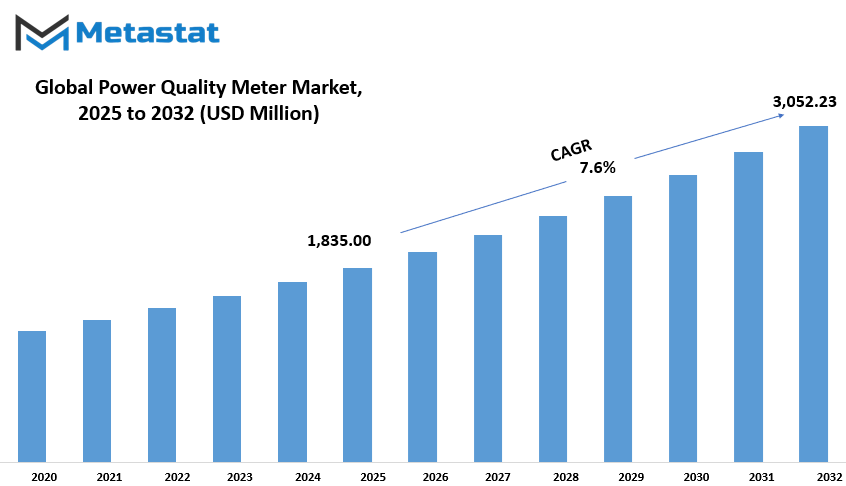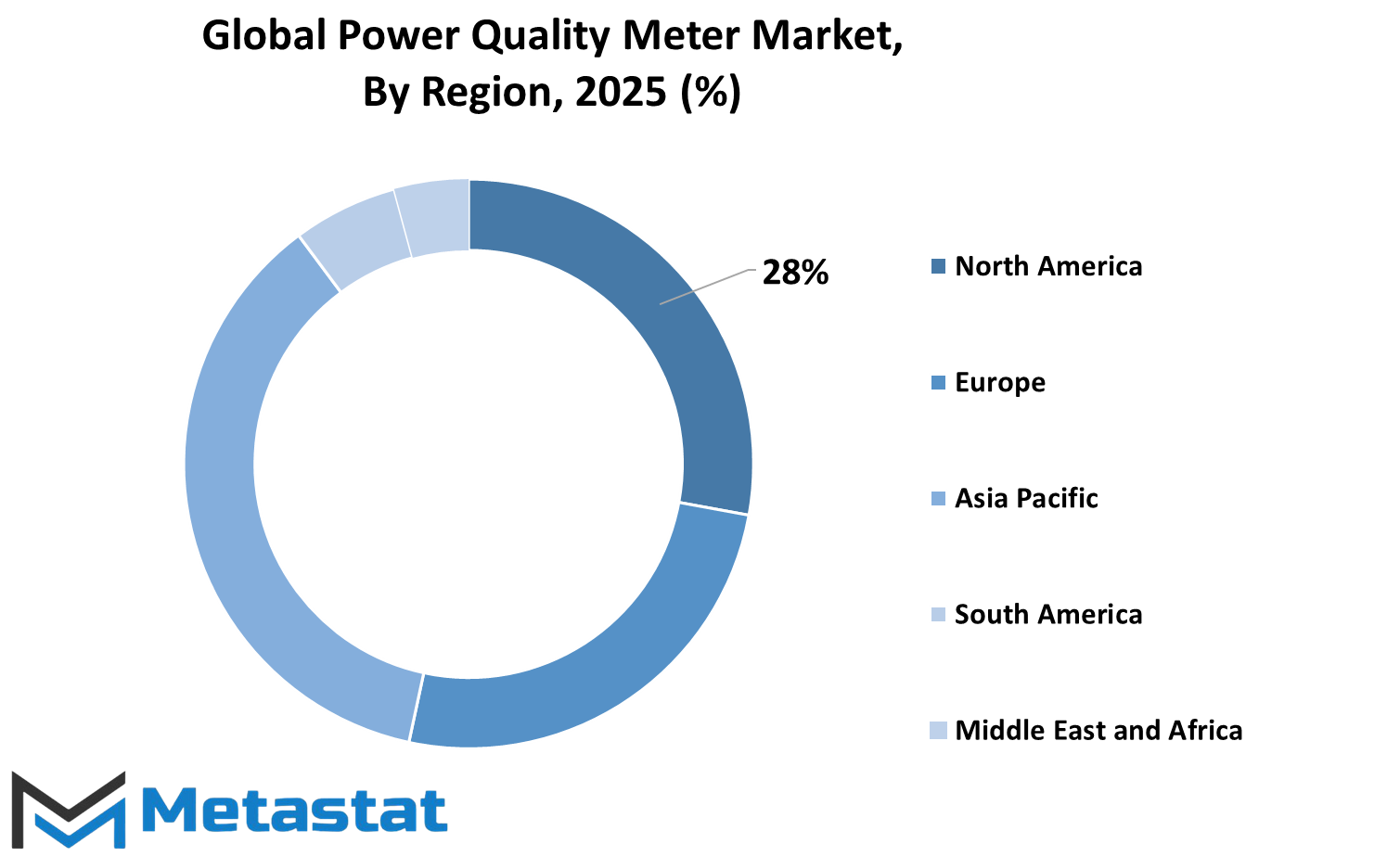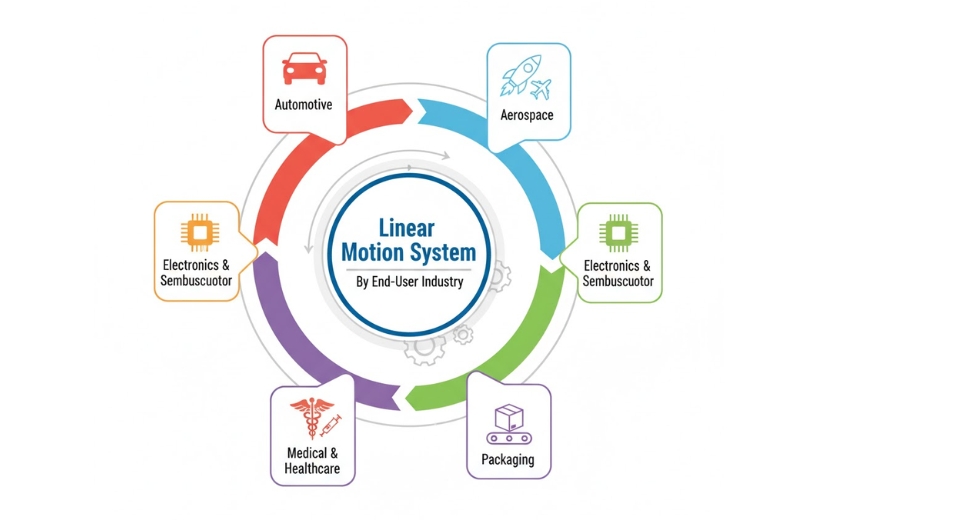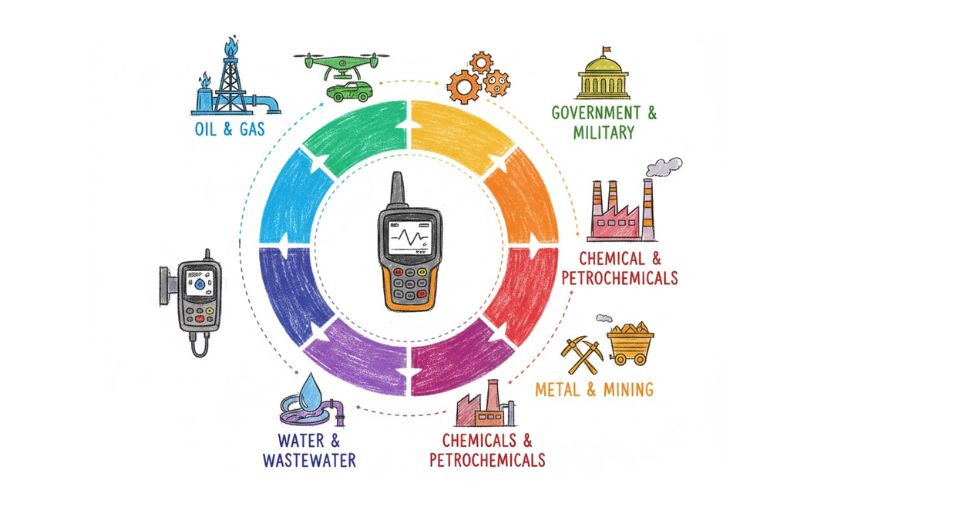MARKET OVERVIEW
The Global Power Quality Meter market is a fundamental tool within the electrical and energy industries, playing an integral role in monitoring, analyzing, and optimizing power quality across applications. The rising demand for precise monitoring tools goes along with industries and businesses minting butter from electrical systems. These meters gauge voltage flickers, harmonics, and other electrical aberration phenomena impacting the performance of power distribution networks. And through their feature of real-time data provision, these meters enable industries to maintain a degree of reliability for their systems while bringing in preventive measures against power inconsistency-induced interruptions.
The growing focus on maintaining stable and continuous power supply has further reinforced the significance of these meters for industrial, commercial, and residential applications. Electrical disturbances can trigger major operational disruptions impacting overall energy efficiency and equipment performance. To curtail the risks posed by such disturbances, organizations are increasingly investing in advanced power monitoring solutions that give detailed insights into energy usage patterns. This further augments the stability of systems and leads to long-term savings by reducing the chances of unexpected downtimer.
The energy landscape continues to shift on its axes with the consideration for augmented power efficiency. Technological juice in store now for the coming days will fine-tune the meters in terms of accuracy and functioning. Such meters can also include advanced connectivity features, integrate with cloud-based analytics, and exhibit interoperability with the smart grid. The valuable opportunity to remotely access real-time data will place businesses and utility providers in good stead to make sound decisions with respect to their power management strategies, leading to optimization of energy consumed and a decreased extent of waste along with a sustainable routing of electrical distribution.
High-power-consuming industries such as manufacturing, data centers, and transportation will continue to rely on viable solutions in maintaining consistent power quality. The consequences of power disturbances in these settings can be far-reaching equipment damage followed closely by losses in some instances. Precise monitoring tools will assist these industries in taking corrective action before minor interruptions escalate into major problems. Furthermore, energy efficiency regulatory requirements will push organizations to embrace advanced monitoring solutions compliant with the changing directives.
Research and innovation further propelling measurement accuracy and efficiency growth by these meters will behove posting on more development for the Global Power Quality Meter market. In this respect, integrating artificial intelligence and machine learning algorithms into power monitoring solutions could, in fact, be a game changer in the detection and remediation of electrical anomalies.
Global Power Quality Meter market is estimated to reach $3,052.23 Million by 2032; growing at a CAGR of 7.6% from 2025 to 2032.

GROWTH FACTORS
The Global Power Quality Meter Market is steadily growing. This is due to the increased level at which both industrial automation and energy efficiency have been gaining importance. Operations in industries have, therefore, modernized with time, and again, the meters are becoming part of power quality monitors. Meters for power quality are usually used to measure and define the power quality characteristics. It detects power fluctuations, energy wastes, and the functioning of electrical systems in these meters. It is also aimed at ensuring operational efficiency in the businesses as well as manufacturing units. Power quality meters, therefore, complement stable power distribution, preventing the risk of unexpected downtimes.
The rapid wide-scale adoption in numerous sectors drives the market onward. The various sectors are embracing new technologies to add productivity to their work environment, monitored through power quality meters regarding electrical parameters to avoid machine or equipment failures. Furthermore, energy management systems have been widely adopted, causing the energy expenditure of firms focusing on reducing the amount of electricity consumed and operational cost to care increasingly about monitoring the quality of energy in different industries. Such trends highlight an ever-increasing importance of power quality meters: optimization of energy use through a reliable power supply.
The market's potential does have a range of problems that are likely to hinder its growth. The most significant among them has been the kind of initial investment that would be necessary to install these meters, especially in small and medium scale enterprises. Their cost is going to include not only the purchase and installation of equipment, which includes power quality meters, but also the cost involved in providing the interpretation of this information by skilled workers, all of which may overwhelm some companies financially. In addition, standardization in the measurement methods for power quality has not yet been achieved in different regions, rendering the products manufactured difficult to assure compatibility on a universal scale. Such thresholds would limit their use within the confines of countries where income is low and differences in regulations exist without exception.
On the other hand, one can say that the increasing acceptance of renewable energy resources enhances the growth prospects for the market at large. As more solar and wind power installations come online, the monitoring of power supply fluctuations will become increasingly important. Power quality meters can help with this by detecting changes in voltage and frequency, allowing more efficient energy distribution from renewables to the grid. Further, the worldwide propagation of clean energy initiatives by governments gives reasonable clarity for the assumption that such meters will have their demand ever more raised on the world stage; hence, new growth opportunities will be available for both manufacturers and industry actors.
MARKET SEGMENTATION
By Phase
Power electronics came into being with considerable demand on the measuring instruments for power quality to obviate these satisfactions-and hence present-day electrical efficiency and reliable operations. The power quality meters are the sophisticated gadgets that can monitor and analyze electrical parameters for steady supply of electrical energy, avoiding failures of electrical installations, and optimizing functioning. These are used in many applications where constant high-quality electricity is essential, including manufacturing, power generation and transmission, health care, and transportation. And there arises an increasing demand for modern power quality meters in these situations of unruly energy consumption and sustainability.
Separate application areas within the market in which Single Phase meter accounted for $701.43 million, while Three Phase endured a share of might. Single-phase meters find applications mostly in domestic and small trade, therefore allowing the end-user to monitor energy usage and eliminate discrepancies. On the other hand, the three-phase meters have found applications in large scale industrial production and commercial establishments, with emphasis on higher power loads and complex measurements, informing the industries on voltage steady state, frequency variations, and harmonic distortions, so that they could optimize on energy consumption with minimum downtimes.
Power quality meters are getting more importance with an increasing number of loads being incorporated in industries for automation and smart grids. Further, power quality monitoring is now getting its deserved attention with increased harnessing of renewable energy sources such as solar and wind. The grid receives a big shock from fluctuations in power from these generation sources-and thus, real-time information on power quality is needed. Again, organizations are being motivated to adopt the advanced metering solutions via measures for energy efficiency and reduction of carbon footprints, which will help organizations to detect inefficiencies and areas of improvement.
Infrastructure projects are key drivers for expanding and modernizing existing power networks. Heavy investments are pouring from the government and private players to upgrade electrical systems to cater to increasing energy demand. Monitoring and managing power quality have changed with the onset of smart technologies, including IoT-enabled meters and cloud-based analytics. The users in these systems have access to real-time data, predictive maintenance, and remote monitoring, allowing them to manage electrical systems proactively.
In summary, Global Power Quality Meter market illustrates a steady growth trend propelled by technology advancements and rising importance of energy management. Power Quality Meters would stand, doubtlessly, as a very important tool in monitoring the future electric landscape, as industries go on to declare the importance of efficiency and power for reliable and sustainable operations.
By Application
Metering has a significant role in a global power quality measure market that stands to keep electricity distribution steady and efficient across all industries. These meters monitor and analyze electrical parameters of the industries and utilities, enabling them in creating proper quality in power. Demand for high power quality metering would shoot up at a faster rate with the growing industrial development.
Many applications arise in power quality meters like in distribution panels, monitoring substations, among many other types of equipment. These include the distribution panels used within the facility's electrical installation to distribute power among the various sections. Thus, a severe detection of even minor anomalies created would eliminate the probability of damage to equipment or lack of operational efficiency. Meanwhile, power quality monitoring substations is of prime importance for utilities and large-scale upscaling industrial operations which majorly define the voltage stability and frequency regulation aspects. With this, fluctuations can be monitored where power quality meters protect outages and mitigate operational losses.
Within industrial settings, power quality meters are available in a wide range of different equipments for smooth operational benefits. Manufacturing facilities, data centers, and commercial facilities utilize them in real time to monitor voltage sags, harmonics, and many other threats to performance. Saving time will be prevented by addressing these circumstances in real time; such solutions will address this issue and improve machinery health. Indeed, these meters also find their applications in many other fields such as renewable energy and residential complexes, which have recently found momentum in energy efficiency.
The increasing attention to energy efficiency and the compliance to the regulatory standards proved to be a significant booster for the power quality meters. In making the countries be more energy efficient and waste efficient, governments together with regulatory authorities have introduced very strict laws in those countries. These laws have to be adhered to by the industries, and power quality meters seem to be the best instrument for monitoring and maintenance of compliance. In addition, advances in technology initiated the manufacture of smart power quality meters able to perform real-time data analytics and allow remote monitoring. It is, therefore, these innovations that permit businesses to optimize their energy usage and reduce costs while ensuring uninterrupted operations.
The importance of power quality meters will continually increase as industries modernize and electrical systems come to take up the newest developments. Companies that invest in these products benefit from improvements in efficiency, reduced maintenance, and reliability of operational practices. As technology continues to advance, this phenomenon gravitates towards further establishing the Global Power Quality Meter market's steady growth rate, which is set to shape the energy management future in drastic terms.
By End-User
Global Power Quality Meter Market 2023 has garnered attention from all industries interested in monitoring and maintaining power efficiency. These meters have a significant role in identifying electrical problems, stable energy distribution, and reducing downtime. Rising dependency on electrical systems across industries has risen the demand for accurate and efficient monitoring tools. Companies and organizations are focusing on reliability improvements, optimization of energy consumption, and eradication of uncertainties in failures.
The major portion of power quality meters is used by the industrial and manufacturing sector to run uninterrupted operations. Power fluctuations cause revenue loss in production, damage to equipment, and increase maintenance costs. Thus meters can measure the voltage sag, detect harmonic distortions, and variations in frequency, which helps in timely preventive action to avoid damage and enhances other efficiencies. The commercial sector uses such power supply assurance instruments, which included office buildings, shopping centers, and data centers. An unstable voltage level can impair business activity, disrupt electronic equipment, and impose unnecessary expenses. Improving energy efficiency is one of the reasons for the growing adoption of power quality monitoring solutions for critical systems by businesses and organizations.
Utilities play a very significant role in stabilizing power supply within various regions. It is through power quality meters that grid disturbances can easily be identified, hence reducing energy losses and improving service reliability. The utility providers utilize such tools for evaluating patterns in load and proper distribution networks managing; this ultimately ends with more satisfied customers as outages can be prevented. These systems include transportation - railways, airports, and electric vehicle charging stations - all needing stable power to enable their smooth functions. Therefore, any power quality disruption would lead to delay in performance provision, damage to the respective equipment, or cause safety hazards. These transportation systems rely on the addition of effective power quality meters to ensure uninterrupted operations and improve reliability in the overall system.
Other industries, like healthcare, telecommunications, and residential buildings, are being converted into power quality-monitoring systems. Important medical life-saving equipment in hospitals and medical centers depends heavily on a constant electricity supply; on the other hand, telecom providers crucially require that their power be uninterrupted to keep networks stable. The residential sector is currently adopting power quality meters slowly with the sole intent of protecting home appliances while saving energy in their consumption.
As demand for energy-efficient solutions keeps on rising, it is certain that advancements in power quality monitoring technology will determine the future course of the market. Companies are being innovative and creative towards improvements in their products regarding accuracy, ease of use, and real-time data analysis.
|
Forecast Period |
2025-2032 |
|
Market Size in 2025 |
$1,835.00 million |
|
Market Size by 2032 |
$3,052.23 million |
|
Growth Rate from 2025 to 2032 |
7.6% |
|
Base Year |
2025 |
|
Regions Covered |
North America, Europe, Asia-Pacific, South America, Middle East & Africa |
REGIONAL ANALYSIS
The global power quality meter market is further divided based on geography, North America, Europe, Asia-Pacific, South America and Middle East & Africa countries. Each of them has further classified and categorized countries based on the players contributing to this market.
The North America market consists of the U.S., Canada, and Mexico, with the U.S. demonstrating vast innovations and industry-wide acceptance. All European countries are represented in the scope of this market; such as the U.K., Germany, France, Italy, and Rest of Europe. These regions were parts of this earth into which industrialization and lenient regulations moved development into this market. By and the other rapidly growing economies such as India, China, Japan, South Korea, and the rest of Asia-Pacific are bordered by Asia Pacific. Increased levels of industrialization and infrastructure development because the demand for Power Quality Meters rises.
North America market covers U.S., Canada, and Mexico with responsibility for innovations and wide adoption in the industry being by the U.S. Such Europe locations as the U.K., Germany, France, Italy, and, as the other parts of the world, Rest of Europe will be included in the portfolio of this market. They have witnessed industrialization and the kind of regulatory environment that has brought about development in this market. Asia Pacific is bordered by rapidly growing economies, such as India, China, Japan, South Korea, and the rest of Asia-Pacific. This region faces increasing levels of industrialization and infrastructure development, which as such can only be expected to escalate demand for Power Quality Meters.

COMPETITIVE PLAYERS
This global power quality meter market enhances the provision of reliable and quality power in electrical systems within various sectors. With increasing use of electrical devices by homes and industries, power quality monitoring has become vital to prevent electricity-associated disruption and promote energy efficiency. These meters are used to identify voltage fluctuations, frequency variations, and disturbances in power, allowing industries to correct the cause of an impending damage. Whereas expansion of industries goes hand in hand with increased demand for electricity, the need for tools that accurately monitor power usage is demanded more than ever.
All critical sectors such as manufacturing, healthcare, and telecommunications need standard and smooth reliable power supply to run all operations efficiently. Even a small perturbation in voltage seriously affects the efficiency of electronic equipment due to the loss of data or some production delays; thus, power quality meters are essential for these industries. Power quality meters enable real-time analysis of electricity quality so that businesses can easily identify abnormal situations and prevent heavy financial losses due to downtimes. Power quality meters are becoming increasingly sophisticated as technology advances, integrating their functions with smart grids and automation systems to boost overall efficiency.
The composition of such a market is quite vast, with the existence of some key players who continuously work on their innovations to meet the ever-changing needs. Among them are Schneider Electric, Siemens AG, Eaton Corporation, and General Electric, which provide sound and advanced power monitoring solutions. Other major players in the market include ABB Ltd., ALL-TEST Pro, LLC, Fluke Corporation, and Mitsubishi Electric Corporation, contributing to the development of high-precision meters for reliable performance in the industry. Other notable companies such as Carlo Gavazzi Holding AG, Elspec Ltd., Schweitzer Engineering Laboratories (SEL), Janitza Electronics GmbH, Algodue Elettronica s.r.l., and Texas Instruments Incorporated are involved in extensive research and development programs to improve the power monitoring technology to provide more effective and user-friendly meters.
As the increasing operational stability, concerning how viable these power quality meters really are, most industries are going to accept their adoption. Investment in monitoring infrastructure is also leveraged by governments and regulatory bodies since they too are learning the power quality mantra. On the other end, as industries become completely automated and digitalized, the adoption of hybrid systems integrating power quality meters into smart grids and IoT-based solutions will take a large leap. The understanding of capturing thorough details of power consumption and disturbances will give an opportunity to the business to optimize energy consumption, minimize wastage, and maximize productivity. The advances in technology will carry on, ensuring that power quality meters are taken to next levels in capturing the most precise data possible, thus assuring that all industries operate smoothly with minimal risk of electrical failure.
South America will be the market for Brazil, Argentina, and the rest of South America with development and focus on modernization driving the demand. The segments for the Middle East & Africa market are based on GCC Countries, Egypt, South Africa, and Rest of the Middle East & Africa, based on energy management programs and industrial developments that favor growth in the market.
The definition of geography defines promotion according to various forces at play in the global power quality meter market, which is different in different regions according to factors like different speeds of technological advancements, different types of industrial needs, and, of course, regulatory support.
Power Quality Meter Market Key Segments:
By Phase
- Single Phase
- Three Phase
By Application
- Distribution Panels
- Substation Monitoring
- Equipment
- Others
By End-User
- Industrial & Manufacturing
- Commercial
- Utilities
- Transportation
- Others
Key Global Power Quality Meter Industry Players
- Schneider Electric
- Siemens AG
- Eaton Corporation
- General Electric
- ABB Ltd.
- ALL-TEST Pro, LLC
- Fluke Corporation
- Mitsubishi Electric Corporation
- Carlo Gavazzi Holding AG
- Elspec Ltd.
- Schweitzer Engineering Laboratories (SEL)
- Janitza Electronics GmbH
- Algodue Elettronica s.r.l.
- Texas Instruments Incorporated
WHAT REPORT PROVIDES
- Full in-depth analysis of the parent Industry
- Important changes in market and its dynamics
- Segmentation details of the market
- Former, on-going, and projected market analysis in terms of volume and value
- Assessment of niche industry developments
- Market share analysis
- Key strategies of major players
- Emerging segments and regional growth potential







 US: +1 3023308252
US: +1 3023308252






